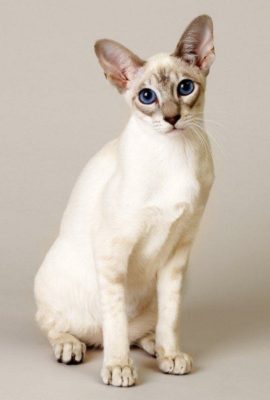Balinese Cat
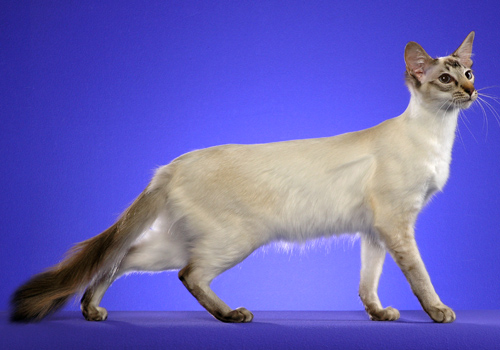
Balinese cats are similar to Siamese cats not only in appearance but have the same character. They are active, playful, and friendly pets. They become very closely attached to the owner and his family. They require a lot of attention and do not tolerate loneliness. Therefore, if you are not ready to allocate enough time – this cat is not for you.
Table of Contents
Breed Information
| Origin | United States |
| Size | 25-30 cm |
| Weight | Males 3-5 kg Females 2-3 kg |
| Fur Type | Semi-long-haired |
| Color | Colorpoint (all colors without white) |
| Lifestyle | Outdoors, indoors |
| Lifespan | 10-15 years |
| FIFe Classification | Category IV “Oriental” Breed designation – BAL |
| WCF Classification | Group 2: “Semi-long-haired” Breed designation – BAL |
| TICA Classification | BA |
| Group | Long-haired cats, hypoallergenic cats |
| Price | $150-300 |
Breed Photos
Origin History
The Balinese cat first appeared in the United States in the mid-20th century. The breed was the result of crossbreeding Siamese and Angora cats. Initially, cats with long hair were considered Siamese crossbreed. But in 1940, breeder Marion Dorset began to breed them as a separate breed. The modern name was suggested by Helen Smith in 1960. Before that, the breed was called Siamese long-haired.
A year later, the breed was recognized by the Cat Fanciers Federation. And ten years later, the Balinese was recognized by the Cat Fanciers’ Association. In the 1980s, the breed became popular in Europe.
Appearance
Balinese are slender cats with a small but muscular build. Externally, they are identical to Siamese, differing only in their long hair. The pet’s head is wedge-shaped, the muzzle is narrow with a long nose. The cat has a powerful jaw with a correct bite. The ears are large, triangular. Almond-shaped Balinese eyes stand askew. They are characterized by blue or blue color.
Balinese cat limbs are long and slender; the hind legs are higher than the front ones. The paws are oval, with elongated toes. The tail is long, of the same width, fluffy. The coat is long and silky. The most classic colors: Power Point; Frost Point; Chocolate Point; Blue Point. Cats with solid color are called Javanese.
Character
Balinese cats are similar to Siamese cats not only in appearance but have the same character. They are active, playful, and friendly pets. They become very closely attached to the owner and his family. They require a lot of attention and do not tolerate loneliness. Therefore, if you are not ready to allocate enough time – this cat is not for you.
The tabby loves to play and move around a lot, so he gets along well with children. As for other pets, the Balinese easily finds a common language with them. They are brilliant and curious creatures who love to discover something new.
Care
The Balinese is a pet that doesn’t mind taking a walk once in a while. It is better to do it on a leash to keep him away from the dangers of the outside world. Also, keep your pet away from outdoor cats.
The long hair of the Balinese has no undercoat, so it is easy to care for. It is worth combing it several times a week. You should bathe your pet once every 2-3 months. Do not forget to monitor the condition of the cat’s eyes and ears. Wipe them with different cotton swabs once every two weeks. The teeth of a Balinese cat deserve special attention. To prevent gum disease, they should be brushed at least three times a week. Do it with the help of special brushes and pastes. Be sure to buy a litter box and scratching post for your cat.
Education
Balinese cats are brilliant and agile. The pet has a lot of energy, which can be directed in the right direction. Tailed cats need to play a lot and be on the move all the time. Education should begin at an early age. The first thing is to teach the cat to the litter box and scratching post. If you take time, you can teach the basic Balinese commands and various tricks. In this case, have patience.
Be gentle with your pet, and don’t be rude to him. Build up the learning process in a playful way. The cat will like this; he loves all kinds of puzzles and riddles.
Common Diseases
The Balinese are not without health problems. The breed can be affected by the following diseases:
- amyloidosis;
- bronchial asthma;
- congenital heart defect;
- lymphoma;
- strabismus;
- gastrointestinal diseases;
- progressive retinal atrophy;
- diabetes mellitus;
- hip dysplasia.
The breed often suffers from dental disease. If not brushed regularly, periodontitis, gingivitis, or tartar can occur. If problems occur, it is best to take your pet to the veterinarian. Vaccinations and deworming are also worthwhile.
Nutrition
In terms of food, Balinese cats are not picky. Feed adult cats twice a day, kittens 3-4 times. Nutrition must be balanced and healthy. Natural dry food will help you in this. They have a fixed composition and contain vitamins and minerals. You can also feed your natural cat food.
Its diet is usually based on lean meat, cereal, and fermented dairy products. Sometimes you can give your pet raw eggs or fish. Vegetables and herbs will be an important component. Categorically unsuitable for the diet of the Balinese such foods as flour, fried, salty, smoked.
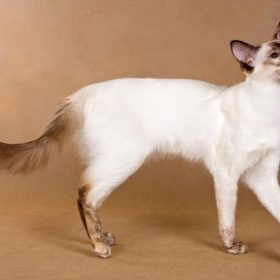 Seychellois Longhair
Seychellois Longhair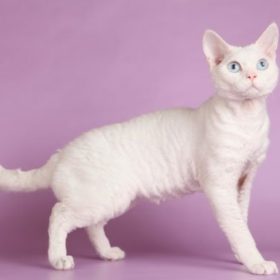 German Rex
German Rex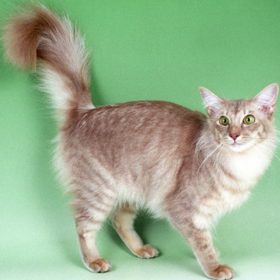 Javanese
Javanese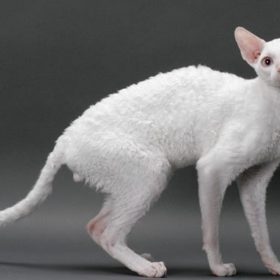 Cornish Rex
Cornish Rex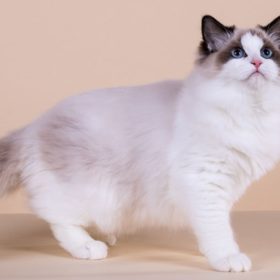 Ragdoll
Ragdoll Ural Rex Shorthair
Ural Rex Shorthair